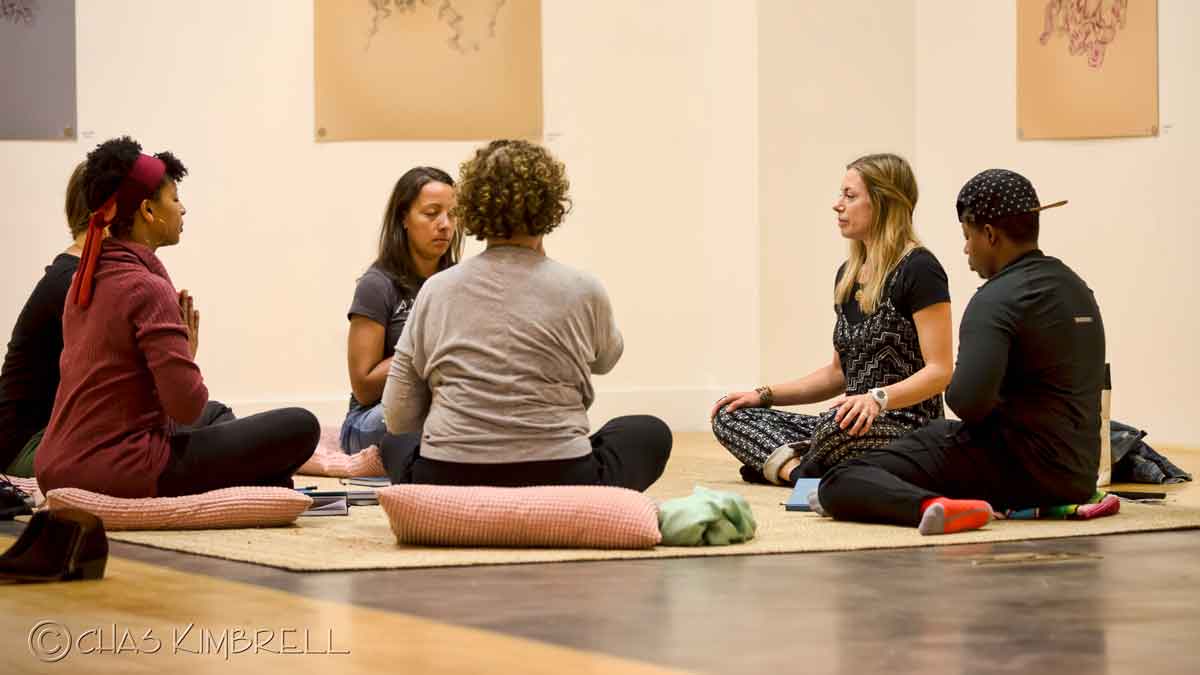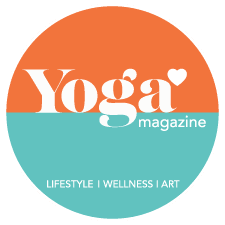A Meditation on Art as an Everyday Experience
ART & MUSIC

This essay is a mindful exercise. Find one small edible object, like an M&M, raisin, or piece of an orange. Go ahead, I’ll wait…
Now, find a seat and sit up straight. Holding the object in your hand, take a few nice deep breaths. Get as comfortable as you can, and please pay attention to what you are experiencing as we go along. You may want to read over the next steps before you proceed with the meditation. If you lose your way or your mind becomes distracted, don’t worry, just go back to the breath, thinking about how it feels going in and out through your nostrils.
With your eyes closed, hold the object in your hand and feel the sensation of it rolling around on your hand. Roll it just in the palm, and then roll it from one hand to the other. Clasp both hands and shake the object in front of you. Place it near your ears and see if you can hear anything. Bring your clasped hands with the object near your nose. How does it smell? Now go back to holding the object in one hand and roll it around your palm using the other. Do you feel any textures? And stickiness? How would you describe this object to someone who has never seen your object or who cannot see?
Now take another breath in, and out. Open your eyes and reexamine the object. Turn it over on your hand and check out all sides. Do you notice anything that you didn’t see when your eyes were closed? Place the object up to your nose and take a whiff. Now the moment you have been waiting for: place the object on your tongue—but do not bite it. Notice what is happening to your tongue. Is saliva building up? Do you have the urge to bite it? Roll the object around in your mouth letting it go from side to side hitting your cheeks and teeth. Play with it a bit more in your mouth. Now bite and chew the object, trying to pay attention to how long it will take you to chew completely before you swallow it.
Consider this: What was your experience with the object? Did your perception change when your eyes were open? Were any memories evoked, such as thoughts about the first time you had an M&M? And what does this all have to do with art and creativity?
In this activity I hope you have seen that skills of mindfulness, attention, and close observation are necessary to bring deeper understandings of an object (which could be something in your everyday life, as mundane as a raisin, or something intended for contemplation like an artwork). This focus also levels the playing field between the various objects that surround us because we can apply the same skills to build understandings and have deeper, perhaps even transformational, experiences with everything in life.
Anything can be art because art is the contemplative experience you have with anything and everything. Art is an experience, not just a product. A painting is just that, a painting: it is the precise language to describe an actual thing that was created with paint, a product of the art experience. Art is a vague umbrella term that doesn’t give us the ability to distinguish all the possibilities for art materials and art-making techniques. Art can take on a broader, yet clearer meaning both as nouns (objects or products), and as verbs ( action as experience [see box]).
If we accept this definition that art is experience, it therefore does not necessarily require the creation of a tangible object; however, since the beginning of human history, we have made things, both utilitarian (spears and clothing), and creative (musical instruments and cave paintings). These things metaphorically become containers for holding histories and memories, symbols of thoughts and feelings, values and beliefs. They urge us to be alert to their embedded messages; to not ignore the lessons contained within the objects. Objects don’t necessary need to be made by humans, either, to be opportunities for artistic experience. They can just as well be the moon, sun, or the trees in our front yard. We need just to apply our contemplative skills to have a focused experience with whatever we are viewing, and the resulting exchange between object and person can be termed “art.”
Objects don’t have to exist at all to have an art experience. Art can be the images conjured up in your mind’s eye or in a dream. Art can be the sounds, senses and flavors of a memory; it can also be the pictures created in the mind while reading a good book, or as someone describes something to you. Art is experience because it is active; it is an action that you can apply in any context and with any object—or not. It is a way to experience life, to be in the present moment with the ordinary and the extraordinary.
Another way to look at it is that the arts can come out of the so-called ivory tower, the grand marble monuments to history, the exclusivity of the gallery world and from those in the “know,” and given back to the people. In this way, we are liberated from thinking that artists are the only makers of art, and moreover, that art is only experienced in museums, only at certain times in our day, and only understood by certain people. Art is part of the everyday experience. It is not something that is done for 45 minutes once a week in the schools; it can be done all the time. It is a metaphysical exchange that sounds off like a gong, bringing us to the present and helping us to be sensitive to the influence of our past, and may help us to even alter our planning for the future.
The great 20th-century philosopher John Dewey wrote in his seminal book Art as Experience (1934) that museums display art and artifacts with the “vulgarity of class exhibitionism,” or for purposes of establishing and maintaining economic and social status. He makes a case for the arts as part of our everyday experience. Dewey asserts the original intention of art and artifacts is to enhance the everyday. He also argues that art is not necessarily designed for, or required to take place in, an institution; rather it is a part of an organized community and can be a social tool for interactions among people and things, to create opportunities for conscious, active experiences. A Deweyan experience from a mindful perspective means to be fully present, to apply our contemplative skills, to be bold with our innate sense of curiosity and wonder, and to have the courage to genuinely engage with others and the objects that surround us. In contemporary times, we have created what I have termed “objects of distraction” (i.e., iPhones, Facebook, Internet), that though designed to bring people together, adds stress to our lives to the point that we become overwhelmed with images and data. As Dewey might contend, we must no longer look for ways to calm, dull, or silence the noises of our lives; rather, now we should rejoice in letting the arts ring loud and clear in celebration our extraordinary everyday experiences.
So on that note, reader, I hope you will realize your own potential as an ingenious communicator as well as an observer and appreciator of all things, seeking the creativity in them that makes you feel connected to other beings, such as cooking a good meal, reading a great book, or viewing a majestic work of art.
Laura Dickstein Thompson, Ed.D. is MASS MoCA’s Director of Education + Curator of Kidspace, as well as an Adjunct Professor in MCLA’s Arts Management Program. She has over 27 years experience in arts education and is a trained mindful practitioner. This essay was the foundation for a workshop Dr. Thompson conducted at the Kripalu Center for Yoga and Health, March 2017.
